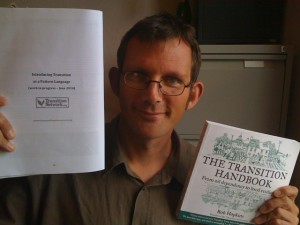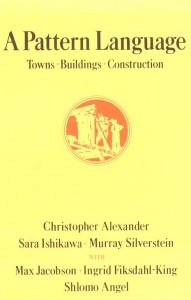20 Sep 2010
 So here we go, the first of many patterns for your delectation and delight ….the original pattern can be found in the evolving pattern directory. To leave comments, suggest examples, criticisms, anecdotes, case studies, projects, essential further reading, or to offer photos you feel better capture the essence of the pattern than the photo I have used, please follow the link and use the comments box (comments have been disabled here so we can gather all the comments in one place). In case you’re wondering what this is all about, there is an explanation with links here. They are not being posted in order… you can see the larger context, the evolving directory of patterns, here.
So here we go, the first of many patterns for your delectation and delight ….the original pattern can be found in the evolving pattern directory. To leave comments, suggest examples, criticisms, anecdotes, case studies, projects, essential further reading, or to offer photos you feel better capture the essence of the pattern than the photo I have used, please follow the link and use the comments box (comments have been disabled here so we can gather all the comments in one place). In case you’re wondering what this is all about, there is an explanation with links here. They are not being posted in order… you can see the larger context, the evolving directory of patterns, here.
Read more»
17 Sep 2010
 Over the coming few months I will be sharing with you the ongoing work in developing the patterns-based model of Transition that will form the centrepiece of the second version of the Transition Handbook, starting on Monday. I have explained how that approach will work before, and it was also set out in the booklet produced for the 2010 Transition Network conference. To do this, we are trying out a different approach, not a wiki, but a rather exciting way of gathering your input. These patterns need to be alive and rich with your hard-won experience, your failures as well as your successes. Here’s how it will work:
Over the coming few months I will be sharing with you the ongoing work in developing the patterns-based model of Transition that will form the centrepiece of the second version of the Transition Handbook, starting on Monday. I have explained how that approach will work before, and it was also set out in the booklet produced for the 2010 Transition Network conference. To do this, we are trying out a different approach, not a wiki, but a rather exciting way of gathering your input. These patterns need to be alive and rich with your hard-won experience, your failures as well as your successes. Here’s how it will work:
Read more»
4 Jun 2010
 Yesterday I posted a document which contained the first rough attempt at sketching out a new way of communicating Transition, using Christopher Alexander’s ‘pattern language’ approach. Over the coming weeks and months I will be blogging more about this, but in advance of the 2010 Transition Network conference (only a week to go!), I thought it might be helpful to give some more background on this. What is a ‘pattern language’ and why might it be a better way of communicating Transition? Here are some initial thoughts.
Yesterday I posted a document which contained the first rough attempt at sketching out a new way of communicating Transition, using Christopher Alexander’s ‘pattern language’ approach. Over the coming weeks and months I will be blogging more about this, but in advance of the 2010 Transition Network conference (only a week to go!), I thought it might be helpful to give some more background on this. What is a ‘pattern language’ and why might it be a better way of communicating Transition? Here are some initial thoughts.
Read more»
 So here we go, the first of many patterns for your delectation and delight ….the original pattern can be found in the evolving pattern directory. To leave comments, suggest examples, criticisms, anecdotes, case studies, projects, essential further reading, or to offer photos you feel better capture the essence of the pattern than the photo I have used, please follow the link and use the comments box (comments have been disabled here so we can gather all the comments in one place). In case you’re wondering what this is all about, there is an explanation with links here. They are not being posted in order… you can see the larger context, the evolving directory of patterns, here.
So here we go, the first of many patterns for your delectation and delight ….the original pattern can be found in the evolving pattern directory. To leave comments, suggest examples, criticisms, anecdotes, case studies, projects, essential further reading, or to offer photos you feel better capture the essence of the pattern than the photo I have used, please follow the link and use the comments box (comments have been disabled here so we can gather all the comments in one place). In case you’re wondering what this is all about, there is an explanation with links here. They are not being posted in order… you can see the larger context, the evolving directory of patterns, here.


